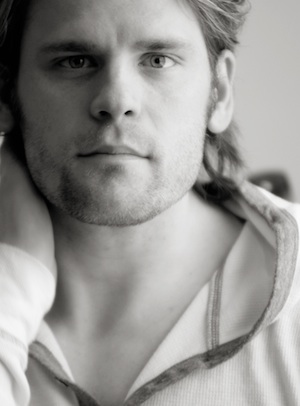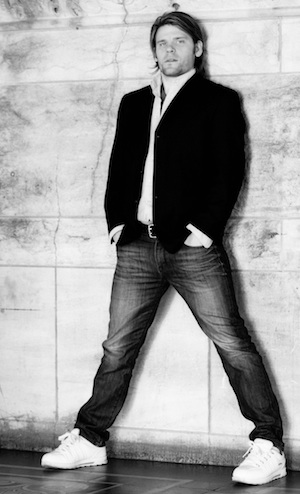

Kevin Andrews
Kevin Andrews is one of the scores of talented dancers, choreographers and movement coaches who call Nashville home. Andrews has worked with Alan Jackson, Big & Rich and LeAnn Rimes, and has choreographed for rising artists Lisa Matassa and Rachele Lynae.
Andrews says that the local, collective talent available is underutilized in Music City. “I think people don’t realize that there are so many gifted dancers and choreographers here,” he says. “They fly in people from New York or Los Angeles, when we have a lot of great talent already in Nashville. I know people that lived in Nashville, and then they moved to New York or Los Angeles. That’s where they got hired for gigs that required them to fly back to Nashville for the shoots.”
Born in Wisconsin, Andrews taught at UW-Madison. After spending two years in Los Angeles studying under Marty Kudelka, Andrews danced at various studios including the Millennium Dance Complex and The Edge Performing Arts Center. After traveling back and forth to Nashville, Tenn. for performances, he made the move to live in Music City full time.
One of his first Nashville dance gigs was in Alan Jackson’s “Good Time” video, along with nearly 80 other dancers. “Most people were not dancers,” says Andrews. “Dancers got the choreography down in about 30 seconds then they made the moves simpler for everyone else. But it was a great time.”
Soon after, he scored a spot as a dancer in the video “Fake I.D.” by Big & Rich, and with LeAnn Rimes in her CMA Country Christmas rendition of “Rockin’ Around The Christmas Tree.” Andrews notes the viewership boost that dance brings to any awards show. “When you do an award show, and there is a dance segment included, 90 percent of the time, that video is viewed on social media more than any other segment of the show. Dance is huge,” he says. He gives dance crazes such as Psy‘s “Gangnam Style” and the 2013 dance “Harlem Shake” as examples. “People are drawn to dance. Why can’t we have a great country dance that people want in the rap clubs?”
In addition to dance and choreography, Andrews also coaches artists to develop an appealing presence onstage. A key element in the training is video. “We often videotape the artists and play it back,” says Andrews. “When artists are onstage, they don’t get to watch themselves, so they don’t see the small things that affect performance.”
“We really work with different onstage scenarios,” he continues. “If they do the same movement for every song, it looks staged. What if you change the scenario? Occasionally you see an artist hide behind his or her instrument, or they say ‘I need a microphone to grip.’ I get them to put it down and walk the stage. I have them stand in front of me with no microphone and show me what they can do. I teach them to use larger movements that will translate to everyone in the audience, from the front row to the back row.”
 When coaching for a music video performance, Andrews focuses even more intensely on details, including facial expressions. “They need to be immersed in the storyline, first of all,” he says. “Sometimes in videos, the artist looks like they have no idea what the vision for the storyline of the video is.” Again, cameras are used. “Putting an iPhone in someone’s face in the dance studio is different than when they are on-set. Sometimes they’ll say, ‘Well, I do better onstage or on set,’ and I’ll say, ‘No, you have to do it here with only one person,’ and we begin working on facial expressions and movement for video that way.” He says the work helps artists to not come across as bored or unconnected to the audience when on camera.
When coaching for a music video performance, Andrews focuses even more intensely on details, including facial expressions. “They need to be immersed in the storyline, first of all,” he says. “Sometimes in videos, the artist looks like they have no idea what the vision for the storyline of the video is.” Again, cameras are used. “Putting an iPhone in someone’s face in the dance studio is different than when they are on-set. Sometimes they’ll say, ‘Well, I do better onstage or on set,’ and I’ll say, ‘No, you have to do it here with only one person,’ and we begin working on facial expressions and movement for video that way.” He says the work helps artists to not come across as bored or unconnected to the audience when on camera.
He also oversaw choreography for artist Rachele Lynae’s video for “Party Til The Cows Come Home” and Lisa Matassa’s video “Wouldn’t You Like To Know.” “She hadn’t danced before but she wanted to,” says Andrews of Matassa. “It was great because she was open to trying new things for the video. I told her to get into the groove of it. We did movement that looked natural and smooth. Simple and elegant.”
Though he points to seasoned artists such as Justin Timberlake as performers who have a polished and natural charisma onstage, he’s quick to note that there are plenty of newcomers with undeniable talent. He names country singer Rachel Farley as an example. “She invited me to a show, and I was blown away at the naturalness,” says Andrews. “She performed in Knoxville and it felt like I was in a stadium—like I was at an [Jason] Aldean concert. She accentuated every lyric in the song with movement.”
Whether he is dancing, coaching for video or stage presence, or creating choreography, for Andrews the end result is about making a performance memorable for the viewer. “At the end of the day, if you are a performer, you chose this. You chose to perform.” Andrews says it is a constant question that artists have to ask themselves. “If you are onstage, why exactly are you worth $50 or $100 for an audience member to watch?”
For more information, visit nashvillechoreography.com.

About the Author
Jessica Nicholson serves as the Managing Editor for MusicRow magazine. Her previous music journalism experience includes work with Country Weekly magazine and Contemporary Christian Music (CCM) magazine. She holds a BBA degree in Music Business and Marketing from Belmont University. She welcomes your feedback at jnicholson@musicrow.com.View Author Profile


